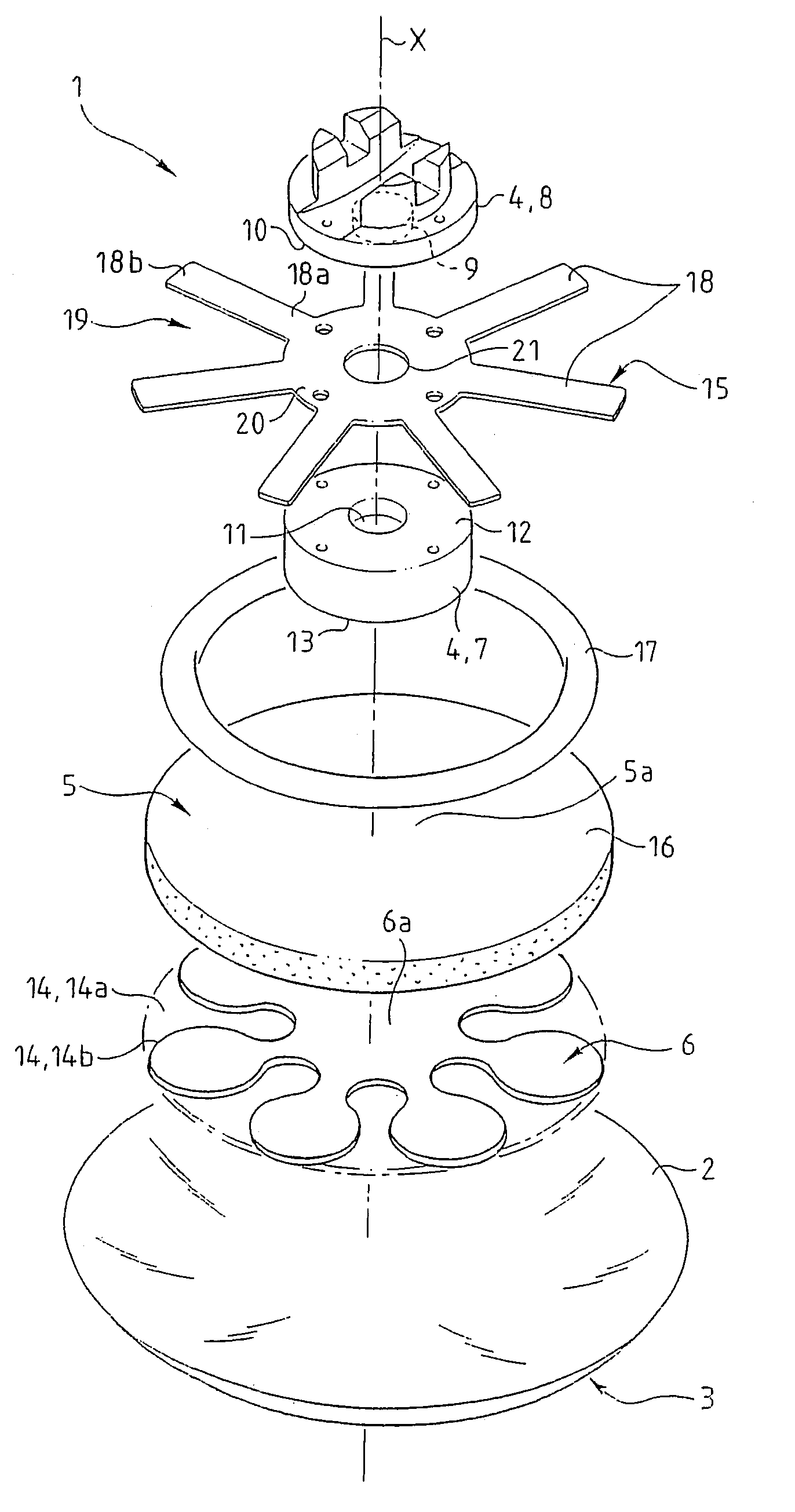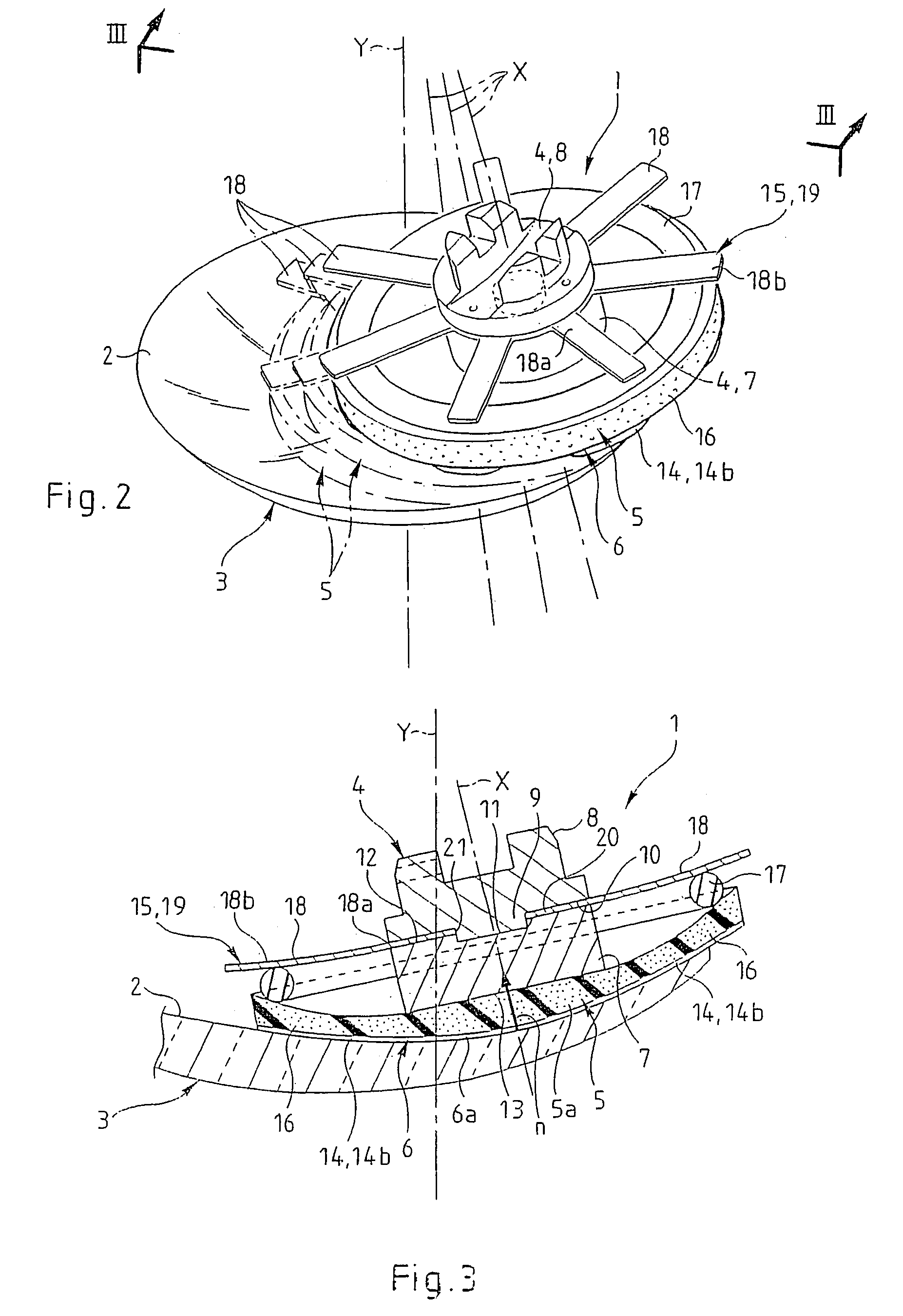Tool for surface treatment of an optical surface
a technology for optical surfaces and tools, applied in the field of surfacing optical surfaces, can solve the problems of reducing the diameter of the tool, and reducing the “lift” or “seating” of the tool, so as to achieve stable surfacing, reliable and fast surfacing, and good quality
- Summary
- Abstract
- Description
- Claims
- Application Information
AI Technical Summary
Benefits of technology
Problems solved by technology
Method used
Image
Examples
Embodiment Construction
[0055]FIG. 1 shows a tool 1 for surfacing an optical surface 2, in this instance one face of an ophthalmic lens 3. In FIGS. 1 to 3 the optical surface 2 concerned is a concave surface, but it could equally well be a convex surface.
[0056]The tool 1 is formed of a stack of at least three components, namely a rigid component 4, an elastically compressible component 5 and a flexible component 6; these components are respectively referred to hereinafter as the support, the interface and the buffer.
[0057]As may be seen in FIG. 1 in particular, the support 4 comprises two jaws, namely a bottom jaw 7 and a top jaw 8 which are adapted to be stacked and nested one within the other by means of a pin 9 projecting from one face 10 of the top jaw 8 and adapted to lodge in a complementary hole 11 facing it in one face 12 of the bottom jaw 7.
[0058]As may be seen in FIG. 1, the support 4 is a circular cylinder with an axis X of symmetry that defines a longitudinal direction.
[0059]The figure shows th...
PUM
 Login to View More
Login to View More Abstract
Description
Claims
Application Information
 Login to View More
Login to View More - R&D
- Intellectual Property
- Life Sciences
- Materials
- Tech Scout
- Unparalleled Data Quality
- Higher Quality Content
- 60% Fewer Hallucinations
Browse by: Latest US Patents, China's latest patents, Technical Efficacy Thesaurus, Application Domain, Technology Topic, Popular Technical Reports.
© 2025 PatSnap. All rights reserved.Legal|Privacy policy|Modern Slavery Act Transparency Statement|Sitemap|About US| Contact US: help@patsnap.com



